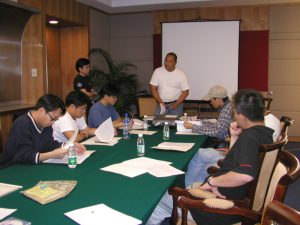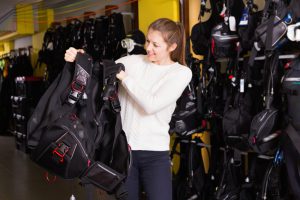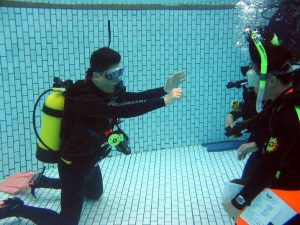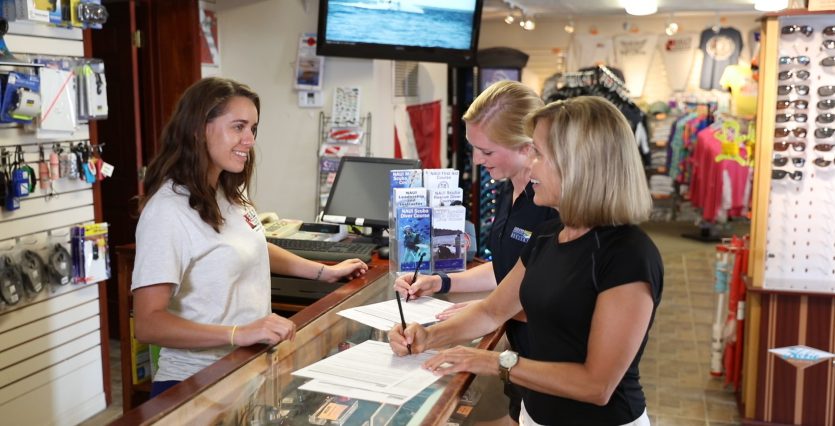As I travel around the Midwest talking to both shops and independent instructors, I find that there is a misunderstanding on how the NAUI eLearning was intended to be used. I also have just read an opinion article in a popular dive business magazine that discussed how an instructor was dissatisfied with how her students were doing by using the agency’s eLearning as the instructor. She decided to add a couple of short “classroom” sessions and found that the students were better prepared to become scuba divers.
The Instructor was on the right track in having classroom in addition to the eLearning. My opinion is that her addition of two short classroom sessions was still not adequate, but she was at least on the right track. It was a good decision.
 NAUI was never of the mind that the eLearning program was to replace the instructor. It was intended as a “tool” to be used to assist you in training your students to be the best, safest, and most knowledgeable entry-level divers on the dive boat. Is our eLearning absolutely perfect? Of course not, but then what is in the world of scuba. Can it still be used as a tool? Of course it can. Does our eLearning have some folks touching coral and wearing their mask on their foreheads in the water? Yes, but you can fix that in one sentence.
NAUI was never of the mind that the eLearning program was to replace the instructor. It was intended as a “tool” to be used to assist you in training your students to be the best, safest, and most knowledgeable entry-level divers on the dive boat. Is our eLearning absolutely perfect? Of course not, but then what is in the world of scuba. Can it still be used as a tool? Of course it can. Does our eLearning have some folks touching coral and wearing their mask on their foreheads in the water? Yes, but you can fix that in one sentence.
The goals of conducting any scuba class are to train the best divers we can, to develop business from bringing additional folks into our sport, and to develop a relationship with our students to make them a “Raging Fan” of their dive center. You cannot accomplish any of this by letting a computer teach your student.
All that being said, I want to outline what I feel is a proper way to conduct a NAUI Scuba Diver class using eLearning. I am not trying to tell anyone how to conduct their business. I am just providing my opinion on how I set up my own entry-level training.
My course is four sessions long, with 30- to 45-minute classroom sessions on each. I require my students to complete the eLearning or at least the session that we are going to discuss prior to class attendance.
Session 1: Introduction of Equipment
 I do this session on the shop floor, introducing them to the shop owner(s) and staff during this session. An hour and a half- to two-hour pool session will follow. Paperwork is also reviewed during this session. I also give a presentation on continuing education.
I do this session on the shop floor, introducing them to the shop owner(s) and staff during this session. An hour and a half- to two-hour pool session will follow. Paperwork is also reviewed during this session. I also give a presentation on continuing education.
Session 2: Introduction of Physics and Lung Overexpansion Injuries
I review the students’ eLearning progress at least a couple of days in advance and give them a call if they are not working on it. I then review their progress again just before class to see what they had problems with, and that is what we discuss in addition to my main points. An hour and half to two hours of pool work follows.
Session 3: Dive Planning
Just like before, I monitor the student progress in advance of the class and again just before class begins to know of problems in advance. I will then work through the dive tables and the NAUI SAC Rate Calculator and cover all the special rules and dive computers. An hour and a half- to two-hour pool session will follow.
Session 4: The Dive Environment and Exam
I again monitor student progress on the eLearning as before and discuss what issues they may have had with any quiz questions. I then discuss dive travel and give them a “proctored exam” in addition to the eLearning final exam. I use the eLearning exam as a pre-test. This session is a bit longer because of the exam, but they usually finish rather quickly. I finish the course with an hour and a half- to two-hour pool session.
 Don’t forget the celebratory pizza party afterward.
Don’t forget the celebratory pizza party afterward.
Always be aware of a student getting cold with long pool sessions because a student who gets too cold is a sure way to lose them.
This course setup accomplishes all of the goals I stated earlier. It brings the students into the shop on four occasions, promotes equipment sales, promotes dive travel, promotes continuing education, builds camaraderie among shop staff and students, provides six to eight hours of pool training, and gives a student a really good knowledge base to become a good, safe, and knowledgeable diver. This, combined with great service will create that “Raging Fan.”
Using the NAUI or any agency’s eLearning as the total instruction is, in my opinion, the absolute wrong direction to go. It does not accomplish any of the goals. So teach your student as you feel meets their needs and your business. Consider using eLearning as a tool that you combine with short classroom sessions. For any who may be using the NAUI eLearning as the sole “dry-time” instructor, you ought to discontinue this method for the good of both your students and your business.


